
Thomas Shreve (2 January 1755, New York - 21 August 1816, Lunenburg, Nova Scotia) was an 18th century Anglican minister.

Thomas Shreve (2 January 1755, New York - 21 August 1816, Lunenburg, Nova Scotia) was an 18th century Anglican minister.
Thomas Shreve was born on January 2nd, 1755. He studied at Anglican ministry at King's College. A loyalist during the Revolutionary War, he served as Assistant Barracks Master in New York and was a Captain in the De Lancey's Brigade and Lieut. in 82nd Regiment of Foot (1777). [1]
After the war, he came to Nova Scotia and settled in Parrsboro, Nova Scotia (1874). He went to England to become a missionary and joined the Society for the Propagation of the Gospel in Foreign Parts and then returned to be rector at St. George's Anglican Church (Parrsboro, Nova Scotia) (1787). [2] [3] In 1803, he moved to Lunenburg, Nova Scotia and served as their missionary for 13 years until his death on the 21st of August, 1816. He was buried in the crypt of St. John's Anglican Church. [4]

Lunenburg is a port town on the South Shore of Nova Scotia, Canada. Founded in 1753, the town was one of the first British attempts to settle Protestants in Nova Scotia.
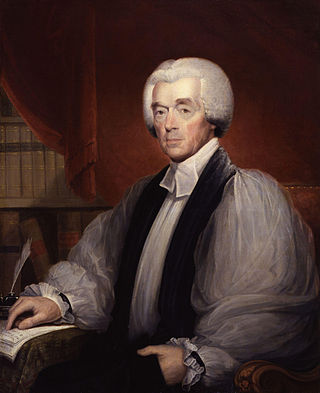
Charles Inglis was an Irish Anglican clergyman and ardent Tory who was consecrated the first Anglican bishop in North America for the Diocese of Nova Scotia. He died at Kingston, Nova Scotia. He is buried in the crypt of St. Paul's Church (Halifax).

Brigadier-General Charles Lawrence was a British military officer who, as lieutenant governor and subsequently governor of Nova Scotia, is perhaps best known for overseeing the Expulsion of the Acadians and settling the New England Planters in Nova Scotia. He was born in Plymouth, England, and died in Halifax, Nova Scotia. According to historian Elizabeth Griffiths, Lawrence was seen as a "competent", "efficient" officer with a "service record that had earned him fairly rapid promotion, a person of considerable administrative talent who was trusted by both Cornwallis and Hopson." He is buried in the crypt of St. Paul's Church (Halifax).

The Diocese of Nova Scotia and Prince Edward Island is a diocese of the Ecclesiastical Province of Canada of the Anglican Church of Canada. It encompasses the provinces of Nova Scotia and Prince Edward Island and has two cathedrals: All Saints' in Halifax and St. Peter's in Charlottetown. Its de facto see city is Halifax, and its roughly 24 400 Anglicans distributed in 239 congregations are served by approximately 153 clergy and 330 lay readers according to the last available data. According to the 2001 census, 120,315 Nova Scotians identified themselves as Anglicans, while 6525 Prince Edward Islanders did the same.

St. Paul's Church is an evangelical Anglican church in downtown Halifax, Nova Scotia, within the Diocese of Nova Scotia and Prince Edward Island of the Anglican Church of Canada. It is located at the south end of the Grand Parade, an open square in downtown Halifax with Halifax City Hall at the northern end.

The Old Burying Ground is a historic cemetery in Halifax, Nova Scotia, Canada. It is located at the intersection of Barrington Street and Spring Garden Road in Downtown Halifax.
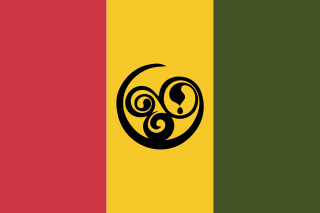
Black Nova Scotians are Black Canadians whose ancestors primarily date back to the Colonial United States as slaves or freemen, later arriving in Nova Scotia, Canada, during the 18th and early 19th centuries. As of the 2021 Census of Canada, 28,220 Black people live in Nova Scotia, most in Halifax. Since the 1950s, numerous Black Nova Scotians have migrated to Toronto for its larger range of opportunities. Before the immigration reforms of 1967, Black Nova Scotians formed 37% of the total Black Canadian population.

John Parr was a British military officer and governor of Nova Scotia. He is buried in the crypt of St. Paul's Church (Halifax).
Thomas Henry Barclay was an American lawyer who became one of the United Empire Loyalists in Nova Scotia and served in the colony's government.

Dettlieb Christopher Jessen was one of the founding fathers of Lunenburg, Nova Scotia, and helped the village through Father Le Loutre's War, the French and Indian War and the American Revolution. He was German born. After his emigration to Canada, he became a militia leader, judge, and politician in Nova Scotia. His first name also appears as "Detleff". He represented Lunenburg County in the Nova Scotia House of Assembly from 1785 to 1793.
Sebastian Zouberbuhler was one of the founding fathers of Lunenburg, Nova Scotia.

St. George's Anglican Church is an historic Carpenter Gothic style Anglican church building located at 216 Main Street in Parrsboro, Nova Scotia, Canada.

The Raid on Lunenburg occurred during the American Revolution when the US privateer, Captain Noah Stoddard of Fairhaven, Massachusetts, and four other privateer vessels attacked the British settlement at Lunenburg, Nova Scotia on July 1, 1782. The raid was the last major privateer attack on a Nova Scotia community during the war.

Nova Scotia is a Canadian province located in Canada's Maritimes. The region was initially occupied by Mi'kmaq. The colonial history of Nova Scotia includes the present-day Maritime Provinces and the northern part of Maine, all of which were at one time part of Nova Scotia. In 1763, Cape Breton Island and St. John's Island became part of Nova Scotia. In 1769, St. John's Island became a separate colony. Nova Scotia included present-day New Brunswick until that province was established in 1784. During the first 150 years of European settlement, the colony was primarily made up of Catholic Acadians, Maliseet, and Mi'kmaq. During the last 75 years of this time period, there were six colonial wars that took place in Nova Scotia. After agreeing to several peace treaties, the long period of warfare ended with the Halifax Treaties (1761) and two years later, when the British defeated the French in North America (1763). During those wars, the Acadians, Mi'kmaq and Maliseet from the region fought to protect the border of Acadia from New England. They fought the war on two fronts: the southern border of Acadia, which New France defined as the Kennebec River in southern Maine, and in Nova Scotia, which involved preventing New Englanders from taking the capital of Acadia, Port Royal and establishing themselves at Canso.
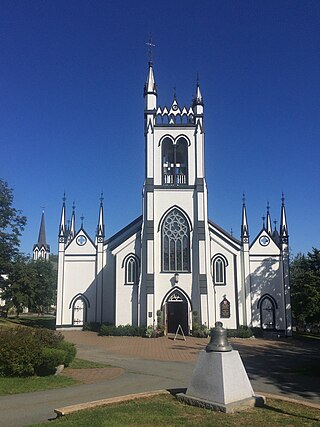
St. John's Anglican Church was the first church established in Lunenburg, Nova Scotia, Canada (1753). It is the second Church of England built in Nova Scotia, and is the second oldest continuous Protestant church in present-day Canada. Early on 1 November 2001, St. John's church suffered significant damage by fire. It was restored and re-dedicated June 12, 2005.

Jean-Baptiste Moreau was first minister at St. John's Anglican Church (Lunenburg) (1753-1770) and one of the founding fathers of the community. He was one of two missionaries who first arrived in Halifax with Edward Cornwallis (1749) and served at St. Paul's Church (Halifax). His wife had the first child born in Halifax and was named Cornwallis after the Governor. Then in 1753 he was sent to help establish Lunenburg, Nova Scotia. Rev Moreau served the community throughout the French and Indian War. He reported to Society for Propagation of the Gospel (SPG) in London, "…the number massacred by Indians in Lunenburg District during the War was 32." He learned the Mi'kmaw language and is reported to have baptised a number of Mi'kmaq children. He is buried in the crypt of St. John's Anglican Church
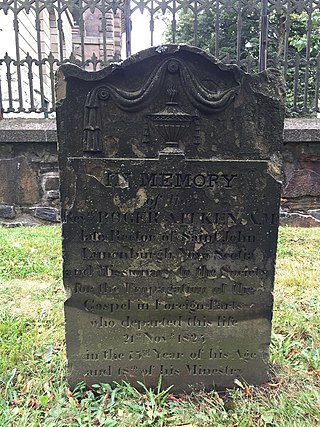
Roger Aitken was a Scottish Anglican priest known for his service as a missionary at Lunenburg, Nova Scotia (1817-1825) for the Society for the Propagation of the Gospel in Foreign Parts. He was the rector at St. John's Anglican Church and was instrumental in gaining construction of the Rectory and in founding St. Peter's Anglican Church, New Dublin.
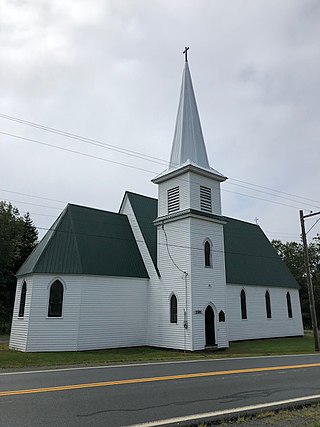

The Province of Nova Scotia was heavily involved in the American Revolutionary War (1776–1783). At that time, Nova Scotia also included present-day New Brunswick until that colony was created in 1784. The Revolution had a significant impact on shaping Nova Scotia, "almost the 14th American Colony". At the beginning, there was ambivalence in Nova Scotia over whether the colony should join the Americans in the war against Britain. Largely as a result of American privateer raids on Nova Scotia villages, as the war continued, the population of Nova Scotia solidified their support for the British. Nova Scotians were also influenced to remain loyal to Britain by the presence of British military units, judicial prosecution by the Nova Scotia Governors and the efforts of Reverend Henry Alline.

William James Almon was a doctor and loyalist who left New York City for Nova Scotia during the American Revolution (1776). He is reported to have attended to the wounded at the Battle of Bunker Hill. He later served at the capture of New York City. He was the surgeon mate of the 4th battalion, Royal Artillery, which served in the Battle of Monmouth. In 1780, he returned to Halifax. He became the surgeon general of the Nova Scotia militia. His last year of practice he joined his son Dr. William Bruce Almon. Along with Duncan Clark and John Halliburton, Almon served as physician to Edward Augustus and were part of the royal social circle in Halifax.